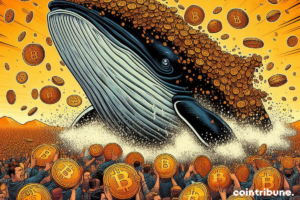Analyzing the Current State of the Industrial Metaverse
2 min read
The significance of spatial data in business expands beyond virtual reality headsets to include a wider array of end devices, bringing along various implications. Recently, the World Economic Forum (WEF) released a report shedding light on the emerging industrial metaverse and the key players investing in XR-related technologies to enhance workplace operations.
The WEF’s “Navigating the Industrial Metaverse” report, released earlier this month, emphasizes the range of emerging technologies shaping the future of 3D virtual collaboration and simulation, redefining the way we work.
The report also outlines how XR can provide enterprises with real-time, interactive, persistent, and synchronized representations and simulations of working environments or assets.
During a recent episode of the Big XR News Show, speakers representing the WEF report and the broader XR workplace community discussed the industrial metaverse, defining the technology and educating businesses. The speakers included:
- Kevin ‘O Donovan, Co-Chair, Industrial Metaverse & Digital Twin Committee, VRARA
- Jay Latta, Founder and Speaker, The Fusionists
- Amy Peck, Founder and CEO, EndeavorXR
- Letitia Bochud, Director, Virtual Switzerland and Chair of the Board of Directors, XR4Europe
- Jennifer Rogers, Executive Officer, Learning Technology Standards Committee at the IEEE
The WEF Reports on the State of the Industrial Metaverse
Peck highlighted that initiatives like the WEF report on the industrial metaverse help move the XR industry beyond the hype surrounding the Meta metaverse.
O’Donovan mentioned that the WEF report compiles experiences from various vendors and companies to answer questions like how XR can be used in different companies and industries.
Latta emphasized the importance of the ecosystem approach promoted by the WEF report, enabling greater interoperability and showcasing the parties involved to help individuals find their place within the XR enterprise landscape.
Bouchard stressed the necessity for legal regulation of the metaverse to ensure its advancement and a clear definition.
Peck added that the collaborative approach of the WEF report involves internal experts leading the research while including industry contributors from various companies, showcasing the broad utilization of industrial metaverse technologies.
Defining the Metaverse
As the XR industry evolves, so do the terms used, from spatial computing to the metaverse. The industry is moving towards more precise definitions as ubiquity is achieved.
The adoption and standardization of terminologies, especially in enterprise environments, are crucial to ensure proper workplace adoption of immersive solutions like digital twins.
Rogers highlighted the industry’s efforts to reach a unified understanding of enterprise-grade XR and the increasing applications of the industrial metaverse in workplaces.
O’Donovan emphasized the continuous convergence of technologies and the necessity to free up time for skilled workers through advancements like AI.
Peck discussed the ongoing efforts to define the metaverse and the importance of focusing on interoperability and privacy controls as the technology becomes more widespread.
For more information on this topic and others, please watch the latest episode of the Big XR New Show.
Source link
#Discussion #State #Industrial #Metaverse






